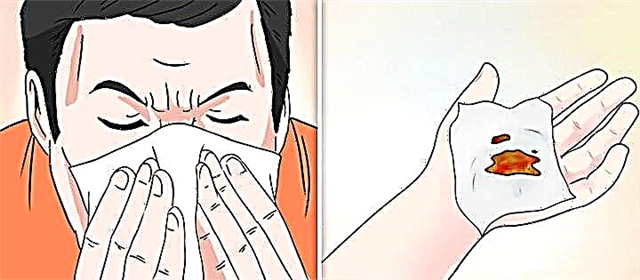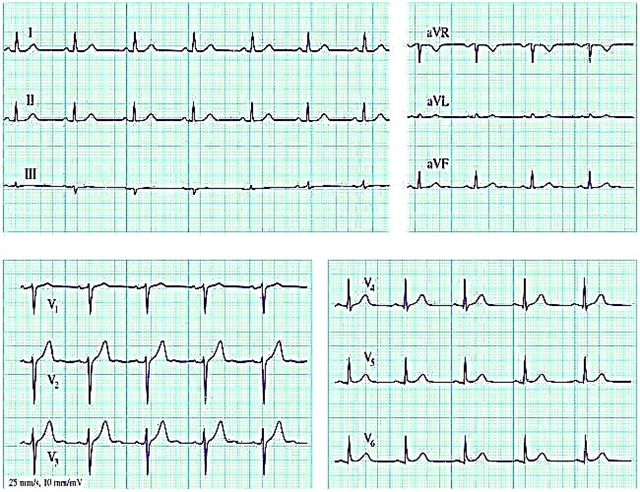A white coating on the tongue can be found normally in healthy people. It usually appears in the morning as a whitish sediment without an unpleasant odor. This is nothing more than the accumulation of germs overnight. Such a deposit is easily removed from the surface of the tongue. If the plaque is removed with difficulty, has an unpleasant odor, then this indicates a pathology. The reason for this phenomenon can be diseases of the gastrointestinal tract, sore throat, oral infections, dehydration, trauma, cancer, smoking, alcohol abuse, and lack of oral hygiene. White plaque on the tongue and tonsils also happens with sore throat. The nature of the plaque differs depending on the disease.
What is angina
Causes
 Angina (acute tonsillitis) is a disease of infectious etiology, characterized by damage mainly to the palatine glands (tonsils), a severe course, and a high risk of developing formidable complications. The causative agents of the disease are pathogenic microflora: bacteria, viruses, fungi, bacilli, spirochetes. Bacterial sore throat lasts longer and more severe than viral sore throat.
Angina (acute tonsillitis) is a disease of infectious etiology, characterized by damage mainly to the palatine glands (tonsils), a severe course, and a high risk of developing formidable complications. The causative agents of the disease are pathogenic microflora: bacteria, viruses, fungi, bacilli, spirochetes. Bacterial sore throat lasts longer and more severe than viral sore throat.
Classification
The disease occurs along the course of the process: acute (tonsillitis) and chronic (chronic tonsillitis). By localization - one-sided and two-sided. By forms - typical or commonplace and atypical or individual, rare.
Typical forms:
- catarrhal - the most common and relatively easily tolerated;
- lacunar - the second most common form;
- fibrinous - not only the tonsils are affected, but also the mucous membrane of the throat;
- follicular - characterized by purulent inflammation of the palatine, tubal, pharyngeal and lingual tonsils, locally manifests itself as separate purulent foci on the tonsils;
- phlegmonous (intratonsillar abscess) - characterized by purulent inflammation of the tonsils and other lymphoid formations of the peri-pharyngeal ring. Most often it occurs as a complication of other types of acute tonsillitis.
Atypical forms:
- ulcerative necrotic or ulcerative membranous form develops in people with severely weakened immunity and vitamin deficiency;
- laryngeal (submucous laryngitis) can occur not only from the effects of pathogenic microflora, but also against the background of a trauma or burn of the throat;
- fungal form;
- herpetic - caused by the herpes virus (Kosaki virus) and, unlike other forms, spreads in the summer;
- syphilitic - one of the forms of syphilis, characterized by a long, sluggish course;
- monocytic - one of the forms of mononucleosis;
- agranulocytic - a rare manifestation of agranulocytosis.
Clinical manifestations
Sore throat differs from all infectious diseases of the nasopharynx with a violent onset and development, pronounced intoxication, a very high temperature, which is difficult to bring down.
Also, the disease is characterized by severe pain in the throat when swallowing and in the tonsils, pronounced swelling of the tonsils and lymph nodes, plaque on the tongue and on the mucous membrane of the throat, purulent plugs in the tonsils.
Treatment
Depending on the pathogen and the form of the disease, treatment is prescribed. The basis for the treatment of acute tonsillitis is bed rest, antibiotic therapy, vitamin therapy, diet, drinking regimen. In the case of a viral nature of the disease, antibiotics are not prescribed.
For differential diagnosis and selection of adequate therapy, it is necessary to contact a specialist at the first manifestations of the disease.
Throat rinsing with antiseptics, herbal decoctions, inhalations, treatment of the mucous membrane with antiseptic solutions are mandatory. Local treatment for angina is no less important than general treatment. Means are used to relieve symptoms: pain relievers, antipyretics, antitussives, and colds. Angina is accompanied by a runny nose and cough in the event of a secondary bacterial infection. Cough and rhinitis are not typical for this pathology. It is strongly not recommended to independently remove purulent plugs from the tonsils, as this can lead to complications (for example, abscess, bleeding from the tonsils).
Causes and symptoms of plaque
Plaque on the tongue with angina is a consequence of the vital activity of pathogenic microflora. In fact, this is the accumulation of toxins under the influence of high temperatures and reduced immunity. The sediment becomes even greater if the patient smokes, does not take care of the oral cavity properly, drinks alcohol, as well as dehydration, which occurs with fever and profuse sweating.
White sediment can form on the tongue in separate foci or cover it completely. In this case, the following sensations may occur:
- burning;
- excessive dry mouth;
- soreness when chewing food;
- the texture of the tongue may change;
- increased salivation;
- redness, swelling of the tongue and gums;
- bad breath;
- plaque with angina can spread to the tonsils and the mucous membrane of the throat.
Even if a person does not have a sore throat, a white coating on the tongue is an alarming signal, since it indicates a reduced immunity
Treatment
 How to remove white plaque in acute tonsillitis:
How to remove white plaque in acute tonsillitis:
- Oral hygiene must be carefully monitored in principle, and especially with angina. It is necessary to clean with a toothbrush not only the teeth after eating, but also the gums, the mucous membrane of the cheeks. You can remove white deposits on the tongue with a toothbrush with silicone bristles on the back. Silicone bristles gently remove plaque without damaging the mucous membrane. The main thing is that there are no painful sensations when cleaning.
- After oral hygiene, it is advisable to rinse your mouth not only with water, but also with an antiseptic solution.
- Do not forget to drink plenty of water, teas, diluted juices, which remove bacteria from the surface of the mucous membrane.
- An excellent folk antiseptic is honey and propolis. In a glass of water 3-5 drops of propolis tincture, rinse your mouth. If the sick person has the strength, then you can chew pieces of propolis after eating. This product not only perfectly removes sediment, but also kills germs. These funds can be used only if it is known for sure that the sick person is not allergic to bee products. If a person has never used these products before, then in case of illness it is impossible to start using them.
- Eating a lot of vegetables and fruits will help remove white bloom. It should be remembered that in the acute period of the disease, when there is intense sore throat, you need to choose soft fruits and vegetables, eat them without a skin, so as not to injure the mucous membrane. It is also not recommended to eat lemon in its pure form, only with tea or in the form of diluted juice. Lemon juice (2 teaspoons in 200 ml of warm water) effectively fights plaque on the tongue. Use as a gargle.
To obtain a therapeutic effect, rinses should be frequent, at least once every 3 hours.
- Folk remedies will help remove white plaque. Boil one tablespoon of herbs with an antiseptic effect in 200 ml of water for 10 minutes, leave for half an hour. Dissolve the broth in half with aloe juice. Rinse your mouth.
- Rinse the throat and mouth with an isotonic solution (1/3 teaspoon of salt per 200 ml of warm water). With the help of frequent rinsing, you can not only remove white plaque on the tongue, but also effectively treat inflammation of the tonsils and nasopharynx.
To remove white sediment from the tongue and mucous throat, you should not use methods and agents that irritate and injure the mucous membrane (use of pure alcoholic tinctures, erasing plaque with gauze, use of coarse toothbrushes and aggressive toothpastes). Any injury to the throat during illness can aggravate the course of a sore throat.



